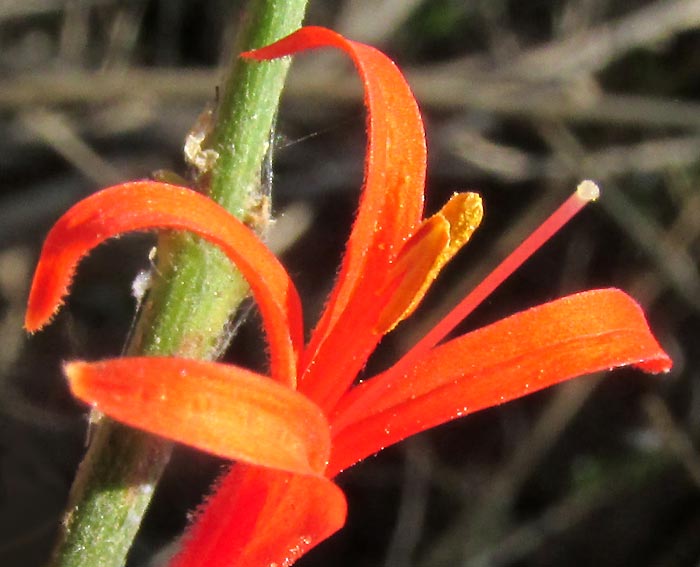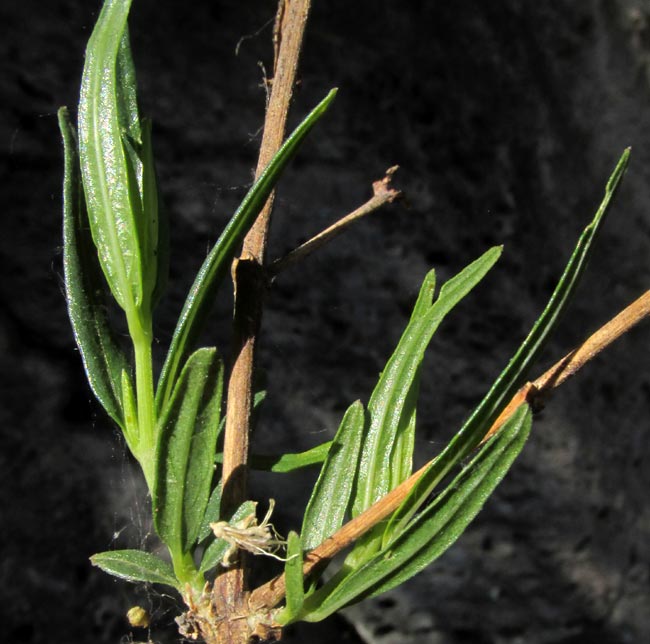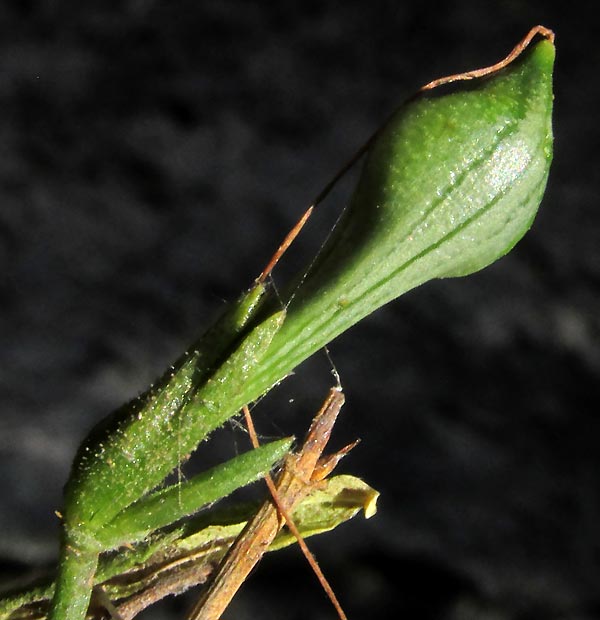Excerpts from Jim Conrad's
Naturalist Newsletter
entry dated May 1, 2022, issued from near Tequisquiapan, elevation about 1,900m (6200 ft), ~N20.57°, ~ W99.89°, Querétaro state, MÉXICO
FLAME ACANTHUS FLOWERING

The above flower, which turned up on a bush at the edge of an old bed of volcanic basalt rock, is a little curious because instead of the more usual five corolla lobes, it bears only four, in a bilaterally symmetrical manner. A closer look is provided below:

Curiously, only two stamens are present, with the pollen-releasing sides of their anthers facing one another at an angle. You can imagine the anther faces being angled just right to daub pollen on a hummingbird's beak as it's inserted to sip nectar at the flower's base. Despite the blossom's brightness, it almost had been passed by, because it grew amid a messy jumble of the bush's much-branched body. Below you can barely see the blossom's touch of red in the center of the bush:

Now at the driest part of the end of the dry season, the bush had lost it leaves, but in advance of the rainy season was beginning to issue new ones here and there:

The above picture shows that the leaves arise opposite one another on the stem, not alternating with one another, and that's an important field mark. However, in this case I didn't need to notice the plant's opposite leaves because the bush bore at least one mature fruit, which was so distinctive that I knew at a glance which family the plant belonged, and species in that family have opposite leaves.

"A capsular fruit in the form of an upside-down-fiddle," I'd been taught many years ago as the unmistakable sign of the mostly tropical and subtropical Acanthus Family, the Acanthaceae. Along with this, the above features and others led me to the genus Anisacanthus, a genus native only to the warmer parts of the Americas. Sometimes members of the family are known as desert honeysuckles, and some species are cultivated for use in desert gardens, in "xeriscaping," where they are especially appreciated not only for their drought tolerance but also for their attraction to hummingbirds.
The Acanthus Family has been finished for the authoritative Flora del Bajío -- with our area being part of the central Mexican arid uplands known as the Bajío -- so it was easy to figure out that of two Anisacanthus species documented in this area, here was ANISACANTHUS QUADRIFIDUS. Since the species also occurs in arid west and south-central Texas, it bears the English name Flame Acanthus. However, mostly it's a Mexican plant, fairly commonly found at elevations from 1500-2000m (4900-7700ft) all the way south to Oaxaca. It frequents scrubby pasturelands, desert scrub and Pinyon Pine forests.